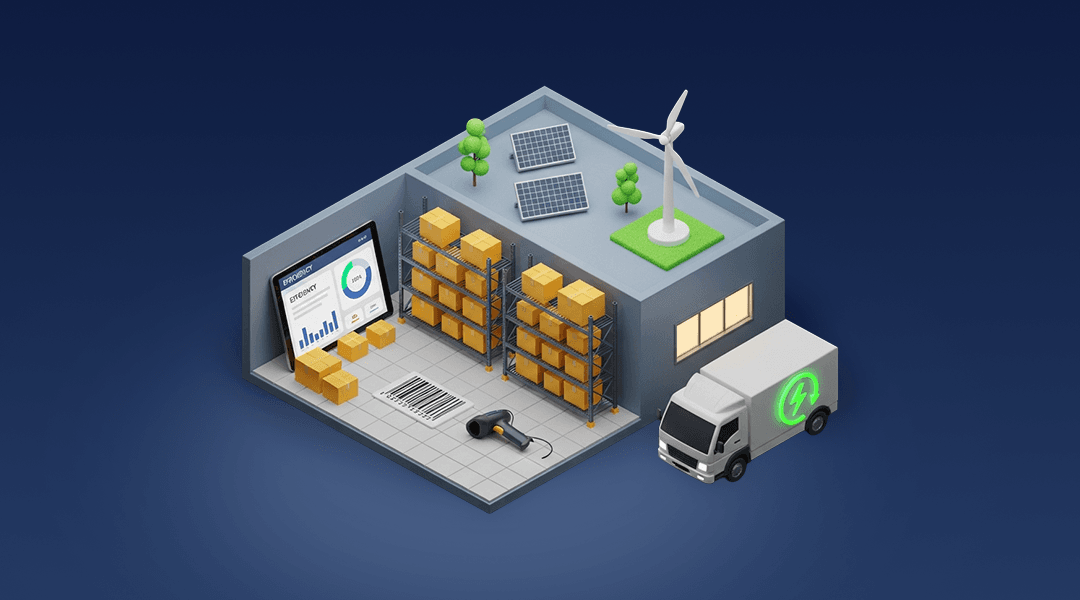Automated Order Fulfillment: Benefits & Challenges

Table of Contents
Introduction
As a business, you're always on the lookout for ways to optimize your operations, make things easier, and keep up with the ever-growing demands of consumers, and hey, we get it: you need at least something that you can ease off on. If that sounds like you, have we got something for you: automated order fulfillment has emerged as the ‘it’ tool that companies worldwide are now relying on, and soon you will be too!
This is the secret to streamlined processes and total efficiency. With super fired up, or faster, delivery times leading to cost savings, order fulfillment automation has proved itself as a tried-and-tested key tool for modern businesses.
However, like every other technological innovation, this one has its negatives. In this blog post by Omniful, we will look at both the pros and cons of automated order fulfillment, so make sure you read till the end to get an all-around picture of this new technology.
Benefits of Automated Order Fulfillment
Faster Fulfillment Times
The most important thing regarding automated order fulfillment is what it can do for you as far as time is involved—that is to say, the time taken between receiving an order and its delivery.
Fulfillment processes were traditionally manual and very time-consuming, where workers would pick up your product, pack it, and then ship it by hand. This was not only slow but also prone to human errors that might happen during the whole process.
But now, with this super-duper automation in place, the time for the completion of the delivery has been reduced significantly. And we mean a lot —- the products are delivered very quickly by using robots, conveyor systems, and sophisticated software that can handle tons of tasks simultaneously. These powerful automated systems can pick and pack items way faster than any human workforce and with fewer errors. That means fewer returns and happier customers.
This automation is what brought the culture of same-day / next-day deliveries into the world of e-commerce. Every platform we know of today offers either same-day delivery or next-day delivery — in this day and age, if, as an eComm platform, you lack automation, that automatically means you lack customers.
Cost Reduction in Operations
The other significant benefit of automated order fulfillment is that it has tremendous (and believe us when we say this —- tremendously tremendous) potential to save any form of operational costs you might have.
Manual order fulfillment requires a good deal of labor to pick, pack, and ship a product. And it should be evident by now that, apart from high wages, these processes also lead to wastage, such as overstaffing or underutilization of staff.
Through automation, though, the associated labor costs can be drastically decreased. This might also save other costs, for instance, in inventory management or mistake minimization.
Automated systems can monitor stock levels in real-time, meaning that products are always available when a customer needs them without any kind of overstocking. In addition, a lesser number of mistakes translates into fewer returns, less waste, and a reduction in customer dissatisfaction and product damage costs. Now, isn’t that helpful?
Scalability and Flexibility in Fulfillment
When businesses grow, their fulfillment needs also grow. Especially during peak seasons like holidays or sales events, a business's order volume can increase dramatically, which means there would be a strain on the existing fulfillment systems.
There’s a way you can decrease the effects of this strain on your business — an automated order fulfillment system.
Let us tell you why: it would give you and your business the scalability and flexibility that it needs to meet such fluctuating demands. Companies can scale their operations by adding more robots, more conveyors, or more fulfillment centers without hiring or training more staff. Such systems are designed to adapt to changes in the workload, thus enabling business operations to be met as the customers continue demanding through any period of time. In addition, such scalability means businesses can expand to new markets or add extra products without risking fulfillment bottlenecks.
Challenges of Implementing Automated Order Fulfillment
High Initial Investment
There are many benefits of automated order fulfillment. However, initial investment can be quite costly. This is because high-priced equipment is required, such as all those robots, conveyors, and automated storage systems we discussed. On top of that, you also need the necessary software required to run your automated order fulfillment system.
For small to medium-sized businesses, this upfront cost can be a major barrier to entering the world of automation. And while it can lead to significant cost savings in the long run, the initial capital outlay may be hard to justify, especially if businesses are unsure of how quickly they’ll see a return on their investment.
Integration with Existing Systems
Another challenge with the implementation of automated order fulfillment is that when new technologies come in, they need to be integrated with existing WMS and e-commerce platforms.
But, as it turns out, many companies/businesses have legacy systems with old designs that are unable to integrate with the new and fancy automated system, which makes such a transition difficult.
Future Trends in Automated Order Fulfillment
With advancements in technology and innovations, automated order fulfillment is clearly going to become more state-of-the-art. It would be fun to see the following trends shape the future of order fulfillment:
Autonomous Delivery and Drones
One of the most innovative developments predicted to come from the world of automated order fulfillment is autonomous delivery vehicles and drones. These technologies are to change the face of last-mile delivery, with their ambitious promises of removing human drivers from the equation and providing delivery faster and more efficiently. We are still determining how far in the future this is. Still, it certainly feels like an ambitious idea, and one (if it comes) to make deliveries in a matter of minutes. These automated vehicles, like self-driving trucks and delivery robots, are predicted to travel down streets to deliver packages without human intervention.
Predictive Analytics and Demand Forecasting
Predictive analytics makes use of historical data and customer behavior to provide companies with better foresight for demand, thereby optimizing their inventory and fulfillment strategies.
With AI-driven demand forecasting, businesses can thus anticipate the shifting trends of demand. This subsequently gives them optimal inventory levels, ensuring instances of overstocking and stock out never arise. Predictive analytics allow trends and patterns to unravel within businesses; this enables them to make informed judgments regarding what products to produce, what to charge, and during what periods to give promotional offers.
By using predictive analytics, you can enhance the productivity and responsiveness of the fulfillment process so that such companies always have enough supply chain capacity to meet a customer's needs.
Conclusion
Automated order fulfillment is revolutionizing how businesses operate, offering faster fulfillment times, reduced costs, and improved scalability. However, on the downside, significant upfront investment is required, which can be a source of discomfort due to the complexities of implementation. Future trends, such as autonomous delivery and predictive analytics, suggest an increasing emphasis on automation driven by further technological advancements.
While adopting automation is a challenging and time-consuming process, its long-term benefits are much more valuable than its challenges. The more businesses begin to integrate automation into their operations, the more efficient and cost-effective the fulfillment ecosystem will become in meeting today's consumers' demands.
To seamlessly implement an Order Management System in your business, contact us right away; your business needs the Omniful guarantee!
FAQs
1. What is automated order fulfillment?
Automated order fulfillment involves the execution of receiving, packaging, and shipping customer orders through computers and robots, conveyors, or other software systems to eliminate manual interaction. It eliminates errors, reduces handling time, and cuts costs on operating activities.
2. What are the main benefits of automated order fulfillment?
Benefits include:
- Faster order processing time.
- Lower operational costs.
- Increased peak season scalability.
- Improved inventory management.
Such factors will make businesses process orders faster and more efficiently while also satisfying their customers more effectively.
3. What challenges do businesses face when implementing automated order fulfillment?
The main challenges include:
- The high investment in automation equipment.
- The integration with existing systems.
- The possibility of workforce resistance.
Nonetheless, savings and efficiencies in the long run largely outweigh these costs.























